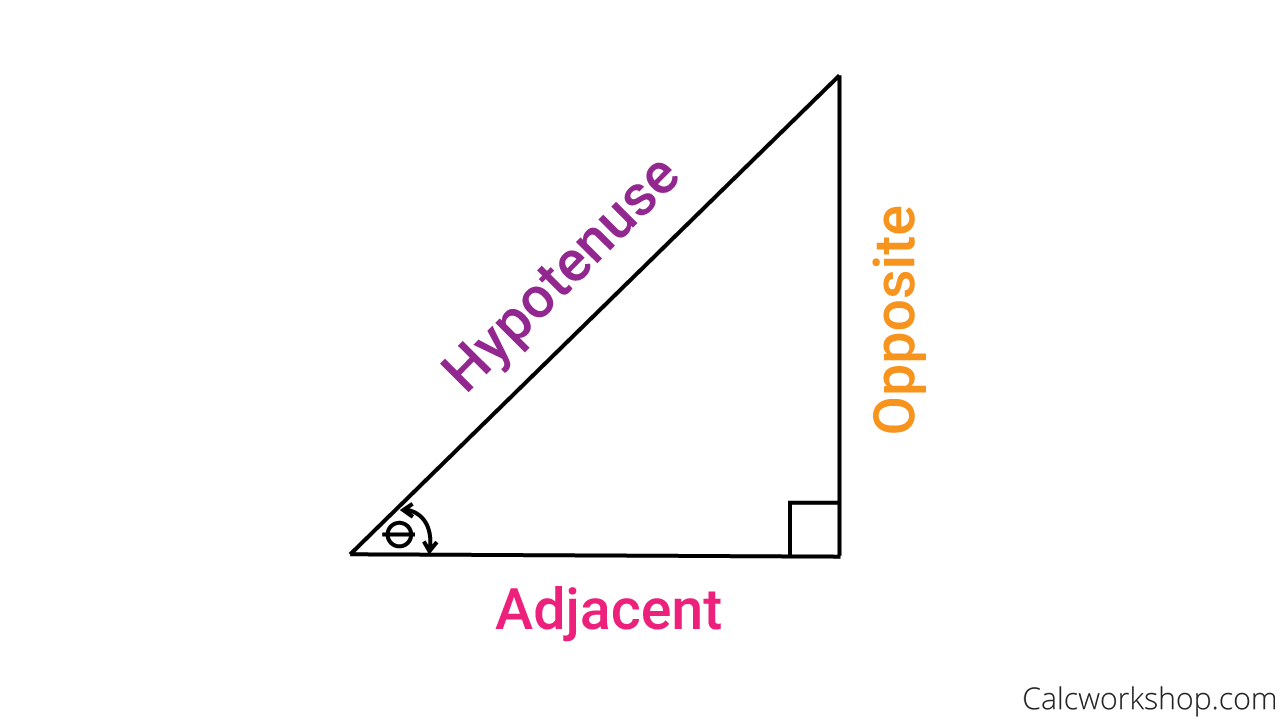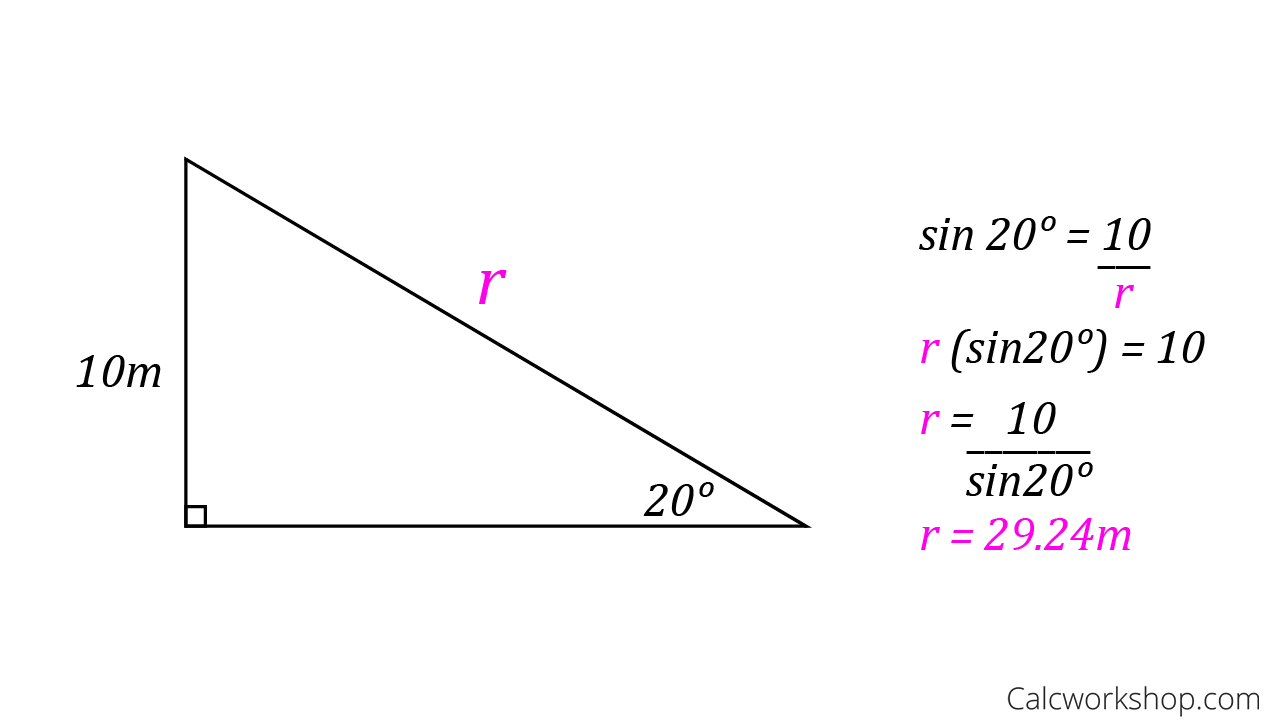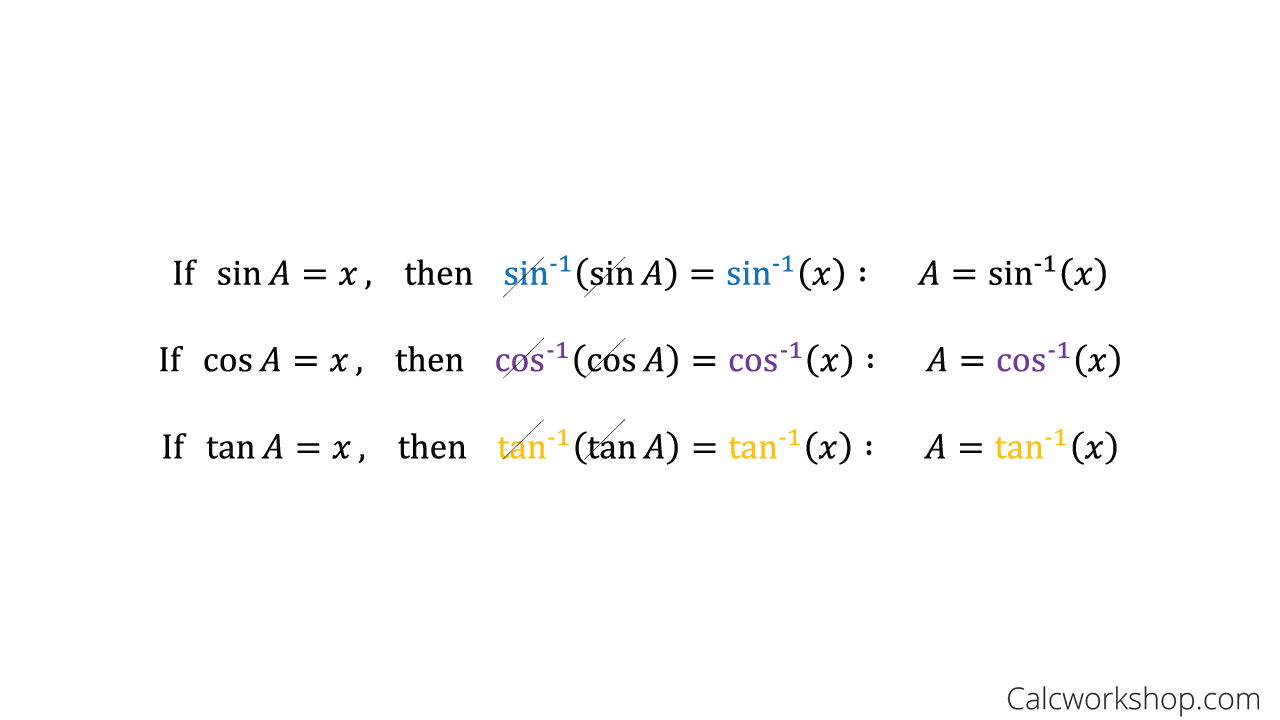
In this geometry lesson, you’re going to learn all about SohCahToa.

Jenn, Founder Calcworkshop ® , 15+ Years Experience (Licensed & Certified Teacher)
It’s probably one of the most famous math mnemonics alongside PEMDAS.
And it’s an essential technique for your mathematical toolbelt.
Let’s get to it!
It’s a mnemonic device to help you remember the three basic trig ratios used to solve for missing sides and angles in a right triangle.
We’ll dive further into the theory behind it in the video below, but essentially it’s taken from the AA Similarity Postulate that we learned about previously. It stated that the ratios of the lengths of two sides of similar right triangles are equal. Therefore, the sets of ratios depend only on the measure of the acute angle, not the size of the triangle.
Key Point: Regardless of the size of the triangle, these trigonometric ratios will always hold true for right triangles.
Remember the three basic ratios are called Sine, Cosine, and Tangent, and they represent the foundational Trigonometric Ratios, after the Greek word for triangle measurement.
And these trigonometric ratios allow us to find missing sides of a right triangle, as well as missing angles.
So how do we remember these three trig ratios and use them to solve for missing sides and angles?
First, we remember how the sides of a right triangle are labeled:The opposite leg is opposite one of the acute angles, the adjacent leg is next to the acute angle, and the hypotenuse is opposite the right angle, as it’s the longest side, as noted by the University of Georgia.

Right Triangle Diagram
Then we use the mnemonic device we talk about earlier: SOHCAHTOA!

An easy way to remember the order of Sin, Cos, and Tan is to use saying such as:
Some Of Her Children Are Having Trouble Over Algebra
If you can remember the order of the trigonometric functions, then a quicker saying would be:
Oscar Had A Heap Of Apples
Modifying our equations from earlier, we have:
There are many more fun sayings as well.
Given the following right triangle, solve for the missing side length, r:

Using Sin to Find the Hypotenuse
Sometimes we are given two sides lengths, and we need to determine one of the acute angles of the right triangle.
How can we do this?
Inverse Trig Ratios allow us to solve for those missing angles quite easily. Consequently, SOHCAHTOA is very versatile as it grants us the ability to solve for sides and angles of a right triangle!

Inverse Trig Values
In the next example we are asked to “Solve the triangle.” This means we are to solve for all missing side lengths and angle measurements.

Finding Sides and Angles Using Inverse Trig
Q: Is sohcahtoa only for right triangles?
A: Yes, it only applies to right triangles. If we have an oblique triangle, then we can’t assume these trig ratios will work. We have other methods we’ll learn about in Math Analysis and Trigonometry such as the laws of sines and cosines to handle those cases.
Q: When to use sohcahtoa?
A: When you are given a right triangle, where two of the side lengths are given and you are asked to find the third side.
Q: Where is the hypotenuse of a right triangle?
A: They hypotenuse of a right triangle is always opposite the 90 degree angle, and is the longest side.
Q: Where is the adjacent side of a triangle?
A: The adjacent side of a triangle is the side (leg) that is touching the angle but is not the hypotenuse.
Q: What does it mean to solve a right triangle?
A: When you solve a right triangle, or any triangle for that matter, it means you need to find all missing sides and angles. Therefore, you will use Trig Ratios, the Triangle Sum Theorem, and/or the Pythagorean Theorem to find any missing angle or side length measures.
In the video below, you’ll progress through harder examples involving trig ratios, calculating missing side lengths and angles, inverse trig, and much more!
Get access to all the courses and over 450 HD videos with your subscription
Monthly and Yearly Plans Available
Still wondering if CalcWorkshop is right for you?
Take a Tour and find out how a membership can take the struggle out of learning math.